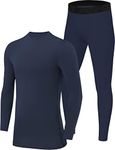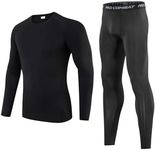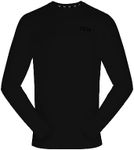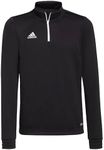Buying Guide for the Best kids base layer
When choosing a kids' base layer, it's important to focus on comfort, warmth, and moisture management. A base layer is the first layer of clothing worn next to the skin, and it plays a crucial role in regulating body temperature and keeping your child dry during outdoor activities. The right base layer can make a significant difference in your child's comfort and enjoyment, whether they're skiing, hiking, or just playing outside in cold weather. Consider the material, fit, and intended use to ensure you select the best option for your child's needs.MaterialThe material of a base layer is crucial because it determines how well it can wick moisture away from the skin and provide insulation. Common materials include synthetic fibers like polyester, natural fibers like merino wool, and blends. Synthetic materials are great for moisture-wicking and quick-drying, making them ideal for high-energy activities. Merino wool is excellent for warmth and odor resistance, making it suitable for colder conditions or multi-day use. Consider your child's activity level and the weather conditions to choose the right material. For active kids in cold weather, a synthetic or wool blend might be best.
FitThe fit of a base layer is important because it affects both comfort and performance. A snug fit is generally recommended as it allows the material to effectively wick moisture and trap body heat. However, it shouldn't be too tight, as this can restrict movement and cause discomfort. Look for a base layer that fits close to the body but still allows for a full range of motion. Consider your child's preference for tightness and ensure they have enough room to move comfortably, especially if they will be layering additional clothing on top.
WeightBase layers come in different weights, which refer to the thickness and warmth of the fabric. Lightweight base layers are suitable for mild conditions or high-intensity activities where overheating might be a concern. Midweight base layers offer more warmth and are versatile for a range of activities and temperatures. Heavyweight base layers provide maximum warmth and are best for very cold conditions or low-intensity activities. Consider the typical weather conditions your child will face and their activity level to choose the appropriate weight. For variable conditions, a midweight base layer is often a good compromise.
Moisture-WickingMoisture-wicking is a key feature of base layers, as it helps to keep the skin dry by drawing sweat away from the body. This is important because wet skin can lead to chills and discomfort, especially in cold weather. Look for base layers that specifically mention moisture-wicking properties. These are typically made from synthetic materials or merino wool. If your child is very active or will be wearing the base layer for extended periods, prioritize moisture-wicking capabilities to ensure they stay comfortable and dry.
Odor ResistanceOdor resistance is an important consideration, especially for multi-day use or high-activity levels. Some materials, like merino wool, naturally resist odors, while others may have treatments applied to reduce odor buildup. This feature is beneficial for keeping the base layer fresh and reducing the need for frequent washing. If your child will be wearing the base layer for extended periods or in situations where washing is not convenient, consider choosing a product with good odor resistance to maintain comfort and hygiene.
















